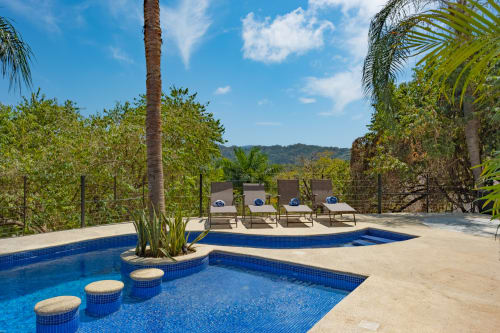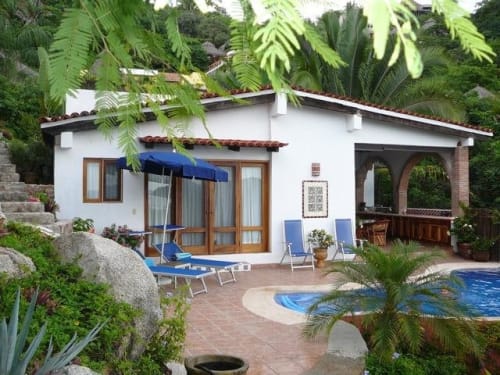The Sayulita Historic Project
Bonnie Metzger was born in Connecticut. She spent her career in Boston, San Francisco and Los Angeles working in major advertising agencies before opening public relations firms in San Francisco and LA, working with film, music, sports and live entertainment clients including Steve Wozniak, for his Us Festival; The Lakers and Kings teams; Prince on ¨Purple Rain”; Ringling Bros. and Barnum & Bailey Circus, The President’s Council on Physical Fitness & Sports and hundreds more. During the economic downturn following 9/11 and simultaneous family deaths, she visited Sayulita in December 2006 and was lured by the peace, beauty and people. She sold her historic ark (houseboat) in Sausalito, CA. and moved here full time four months later. Her story follows:
When traveling in Mexico in the 1980s and 1990s, I was compelled to ask locals how they felt about North Americans moving into their towns. The contrast in cultures was vast and I had a desire to leave my own for Mexico’s. Their answers were always the same, no bueno. Living became too expensive for the original people who had to move out of town as we took over their land and introduced new traditions such as Halloween, music, foreign food, public intoxication and many more things that threatened their culture. While their lives had often improved, they longed for their ways, not ours. I too was part of the problem, having built a vacation rental in Sayulita when there were only few in 2007.
I sat at the old Aaleyah’s (a local restaurant) at night and studied Sayulita for three years to learn the local culture. I got to know the locals and original families in the tranquil pueblo it was then. The beach was empty, there was parking everywhere, everyone knew everyone. With the support and furniture donations by Rodrigo Peña and Rodrigo Peña’s son, I taught art with the artist Gloria Navarro to 52 students year round for four years at the Casa de la Cultura. I watched the town begin to grow as more people discovered it. The town’s elders had reached an age that they began to pass and with them went the undocumented history of Sayulita. I felt that this was important information to capture, as nearly every town in the world has its history recorded for future generations. I set out to do just that.
EL PROYECTO DE LA HISTORIA DE SAYULITA / THE SAYULITA HISTORIC PROJECT
At the beginning in 2010, there was no grand plan, other than to research who the original families were and to meet with them over 3 months in 2010 to learn, with the help of Alejandra Montoya as translator, about their lives and the town’s origins.
I started with a mosaic wall on the Casa de la Cultura. The Delegado and Municipal Government’s chose the Casa de la Cultura and granted permission for the mural. Lili Perez coordinated the building. I was asked to present plans which I drew in pastel on brown food paper, then invited the new Costa Verde to sponsor the project as a way to help integrate them into the community. Generous home owners and a hotel donated tiles which the children separated into colors. Materials were donated anonymously.
A core group dedicated volunteers along with drop-ins and children spent 3 months each day with me working on eight 4x3ft panels that depicted the original culture; lime growing, fishing, women washing clothing in the river, horse corrals, the first restaurant (a simple table on the playa), and raicilla smuggled in by boat at night, which the government wanted to have on the mural. By the end of this project the peoples’ cultural center was torn down to make way for a developer… which oddly was exactly what the wall was gently protesting.
About a year later I returned to the families homes to ask if they would be interested in telling their stories in a zero-budget documentary film, “Paraiso Antes y Ahora”, which I produced and directed in 8 days with a Los Angeles cinematographer. Local businesses and individuals were generous with food, horseback riding, boating, music, surfing, zip lining and donations. Translation was donated by Chile Lopez. It debuted in a private event at the then-new La Rustica for those featured in the film, with the support of the Municipal Government which provided equipment. And again in the plaza to the general SRO public (with some embarrassing download glitching). You can watch the documentary here.
From there a partnership with the vaquero, Manuel Plascencia, who accompanied me to meet with the the families to see if they had photos to lend for a photo exhibition. Funding for this was provided by my friend, the artist and retired Professor of Genealogy at the University of Quereteraro, Salvador Perez, who painted 15 landscape paintings for the project and drove them to Sayulita. The exhibition of 200 has been hung palm tree to palm tree outside of the Church, in the plaza, along Selfie Street and at a ProSayulita fundraiser.
I created a Facebook page, Sayulita Historic Project, which includes the film and the photo exhibition, art by the late artist Barbara Dahn and historic photos of Mexico’s culture in general. I hope to build a website as well, though there are no funds for this at this time.
I am currently writing a book on the history of Sayulita, for which I am seeking a publisher.
The ultimate dream that Bob Guard, Cap Sparling, Manuel Plascencia and I have is a small museum in downtown Sayulita. I have the idea for the museum’s design and have been gifted a collection of stone tools; non-valuable pottery fragments; beautiful art by the late Barbara Dahn (donated by her husband, Richard Dahn), and books written years ago by visitors when Sayulita was still a little fishing village. With the the film and photo exhibition a museum would make a profitable and self-sustaining business that would support local workers and businesses.



DONATIONS AND VOLUNTEER NEEDS:
If you would like to support the Sayulita Historic Project or any of the individual programs, I welcome the help. The project needs:
-Help with a 5-013C or Mexican equivalent non-profit status.
-Website.
-Additional photos.
-Printing costs for additional photos.
-Book publishing costs and consultancy if one has published before or has contacts.
-Space for a museum, rent, build-out costs, printing and more old museum-worthy artifacts.
NOTE: I have been asked numerous times by profit-making businesses to donate historic photos for their businesses, videos, interiors, etc. My agreement with the original families, is that their photos be used for the Sayulita Historic Project and not for profit making businesses (museum tbd). However, I do have select photos available from another resource and for a donation of $80 can provide use of those. To date, this request for support for the Historic Project has been declined by all. Let’s change this!







